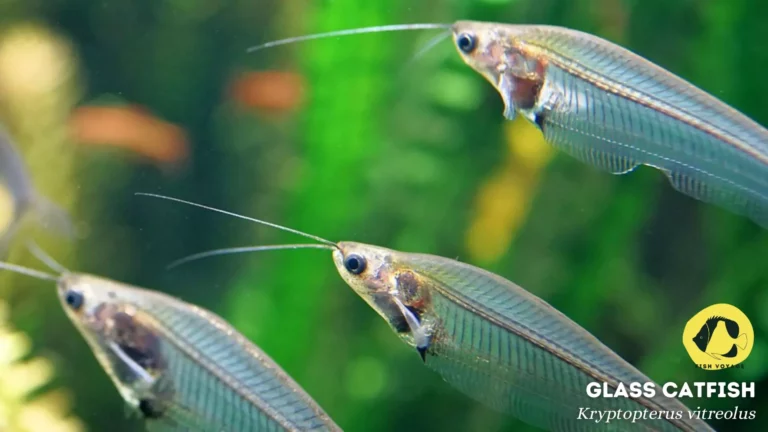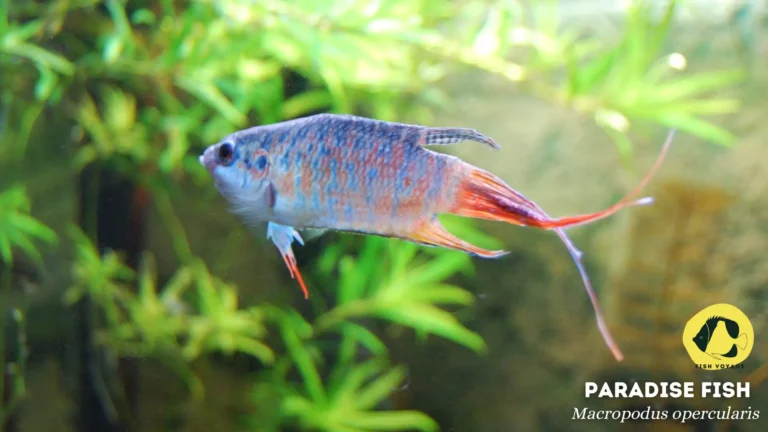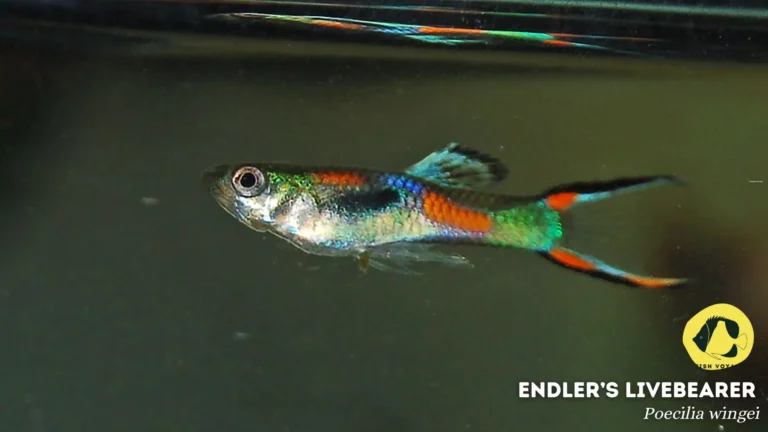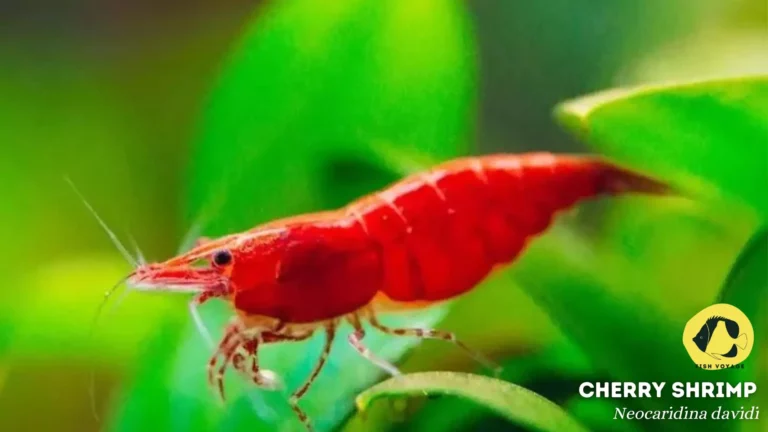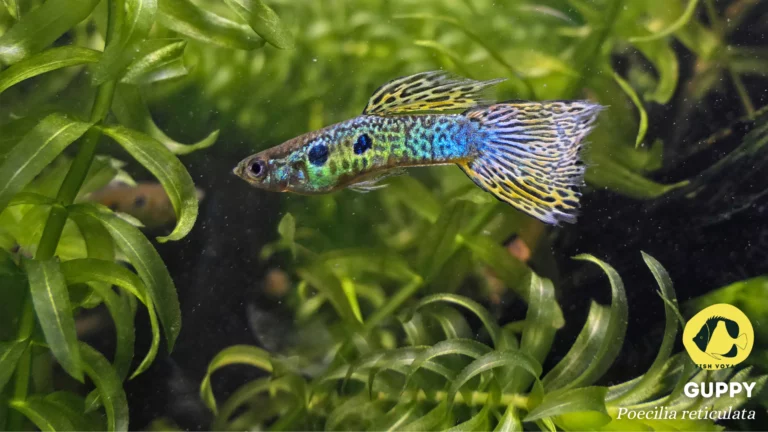Top 10 Large Tetra Fish for Your Aquarium

In the realm of ornamental fishkeeping, Large Tetras stand out as captivating additions to aquariums, known for their vibrant colors, distinctive patterns, and engaging behaviors. These hearty freshwater fish have become integral to the aquarium hobby, captivating enthusiasts with their stunning aesthetics and interactive nature. As we delve into this blog post, we will explore the defining characteristics of Large Tetras, discuss popular species within this category, and offer valuable insights on creating an optimal environment for their well-being. Whether you’re a seasoned aquarist or a novice enthusiast, join us in unraveling the secrets to successfully care for and appreciate the charm of these magnificent aquatic companions.
Characteristics of Large Tetra
Size of Large Tetras
Large Tetras are characterized by their impressive size, typically ranging from 2.5 to 6 inches, making them substantial inhabitants in aquariums. Their notable size contributes to their visibility and appeal, enhancing the overall aesthetic of any aquatic environment.
Colors and Patterns
Immerse your aquarium in a burst of colors with Large Tetras, showcasing a diverse palette ranging from vivid reds and blues to iridescent greens. Their intricate patterns, such as stripes, spots, and unique markings, add a dynamic visual element to the tank. Discover how these vibrant hues and striking patterns can elevate the aesthetic allure of your aquatic setup.
Behavioral Traits
Large Tetras exhibit fascinating behaviors that captivate aquarium enthusiasts. From their playful schooling tendencies to their inquisitive exploration of the tank, these fish bring life and energy to any aquatic community. Delve into the nuances of their social dynamics and discover the interactive charm that Large Tetras contribute to the aquarium environment. Understanding their behavioral traits will not only enrich your fishkeeping experience but also contribute to the overall well-being of these captivating aquatic companions.
Popular Species of Large Tetra
Serpae Tetra (Hyphessobrycon eques)
Known for its fiery red hues and distinctive black markings, the Serpae Tetra adds a vibrant touch to aquariums. Its schooling behavior enhances its visual impact, creating a dynamic and lively aquatic display.
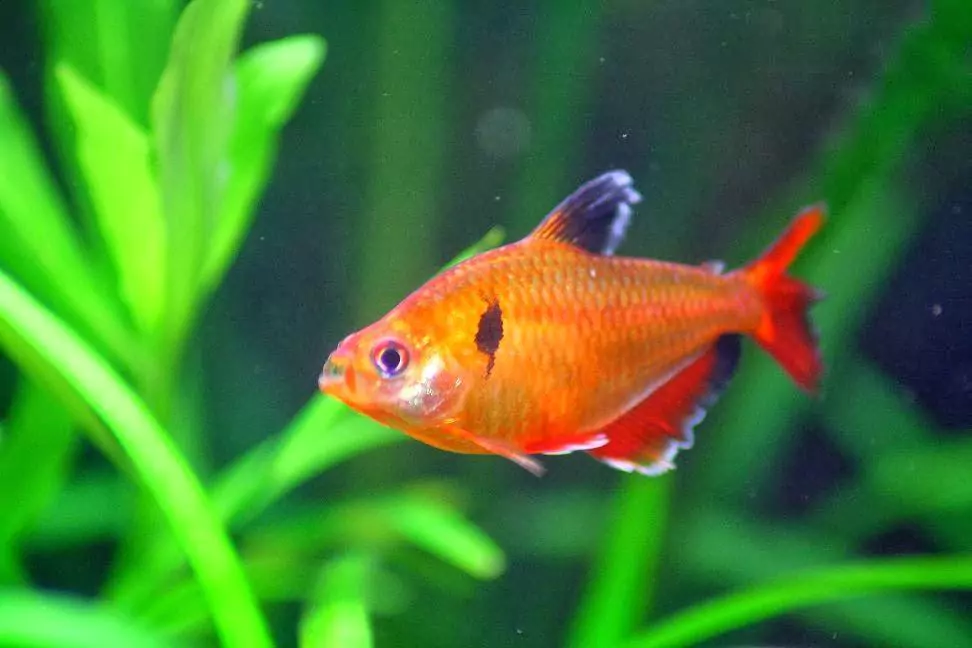
Bleeding Heart Tetra (Hyphessobrycon erythrostigma)
Characterized by a captivating red mark on its silver body resembling a bleeding heart, this species is a favorite among aquarists seeking a visually striking centerpiece fish. Its peaceful nature makes it an excellent choice for community tanks.

Buenos Aires Tetra (Hyphessobrycon anisitsi)
With its silvery body adorned with a distinctive black triangular mark, the Buenos Aires Tetra is a robust and adaptable species. It thrives in varied water conditions and is recognized for its active schooling behavior.
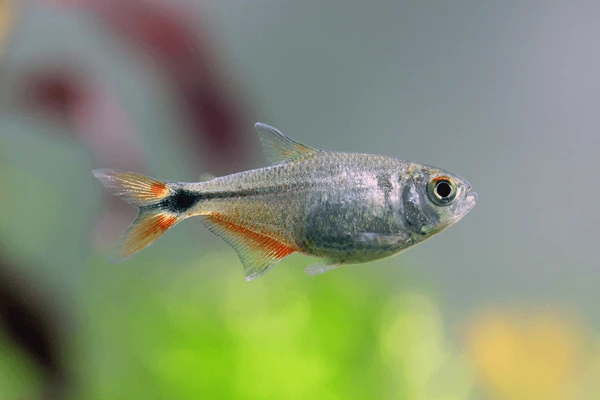
Colombian Tetra (Hyphessobrycon colombianus)
Exhibiting a captivating blend of silver and yellowish hues, the Colombian Tetra is prized for its striking appearance. Its peaceful demeanor and compatibility with a variety of tankmates make it a popular choice for community aquariums.
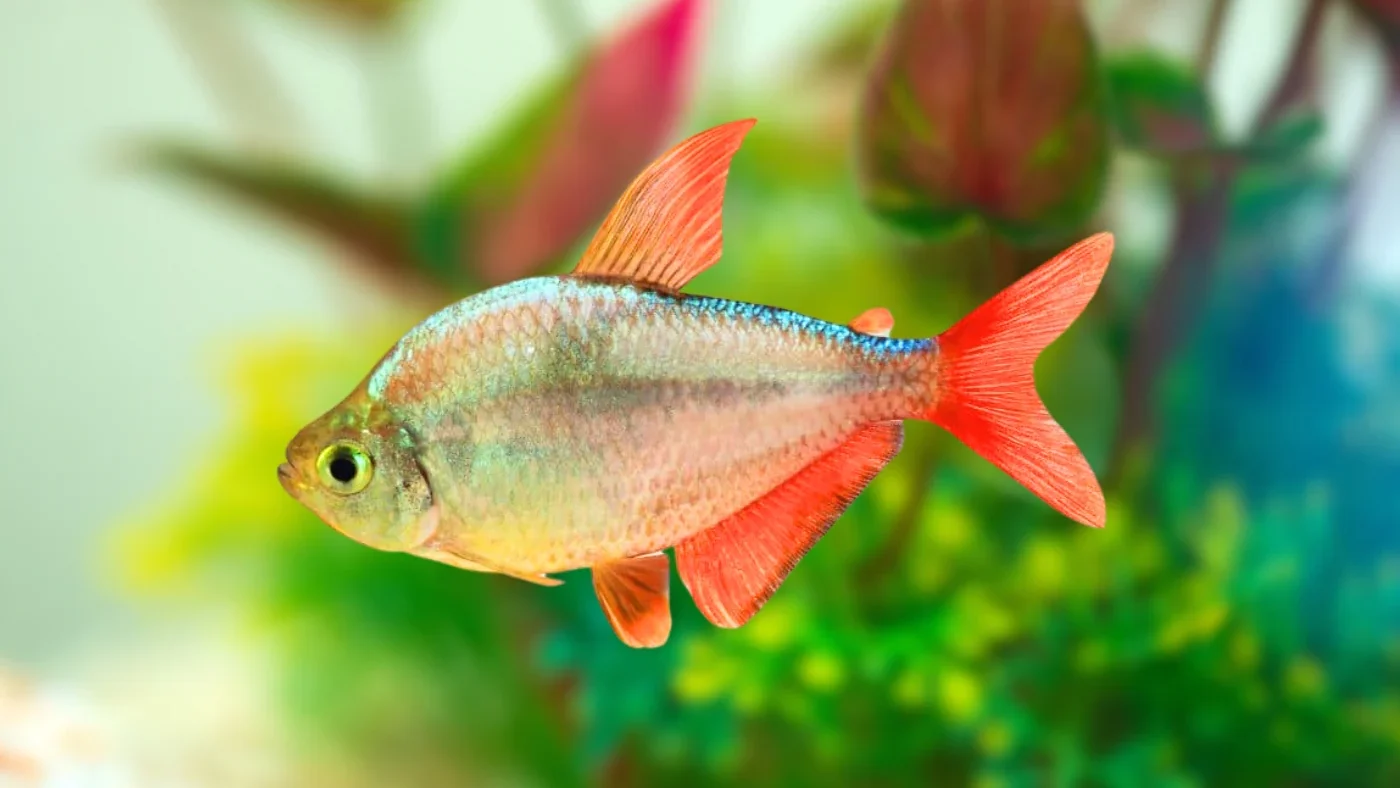
Black Skirt Tetra (Gymnocorymbus ternetzi)
Recognized for its elongated black fins and silver body, the Black Skirt Tetra adds a touch of elegance to aquariums. Its adaptability to different water conditions and ease of care make it suitable for both beginners and experienced hobbyists.
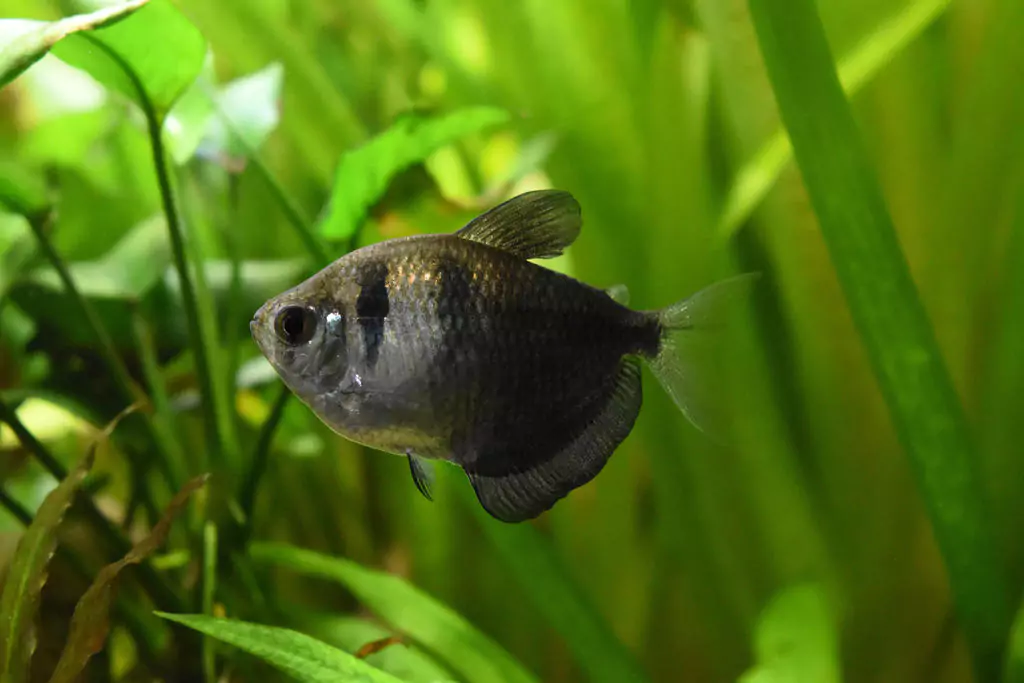
Diamond Tetra (Moenkhausia pittieri)
Displaying a shimmering diamond-shaped spot on its body, the Diamond Tetra is a visually appealing species. Its peaceful nature and compatibility with various tankmates make it an ideal choice for community setups.
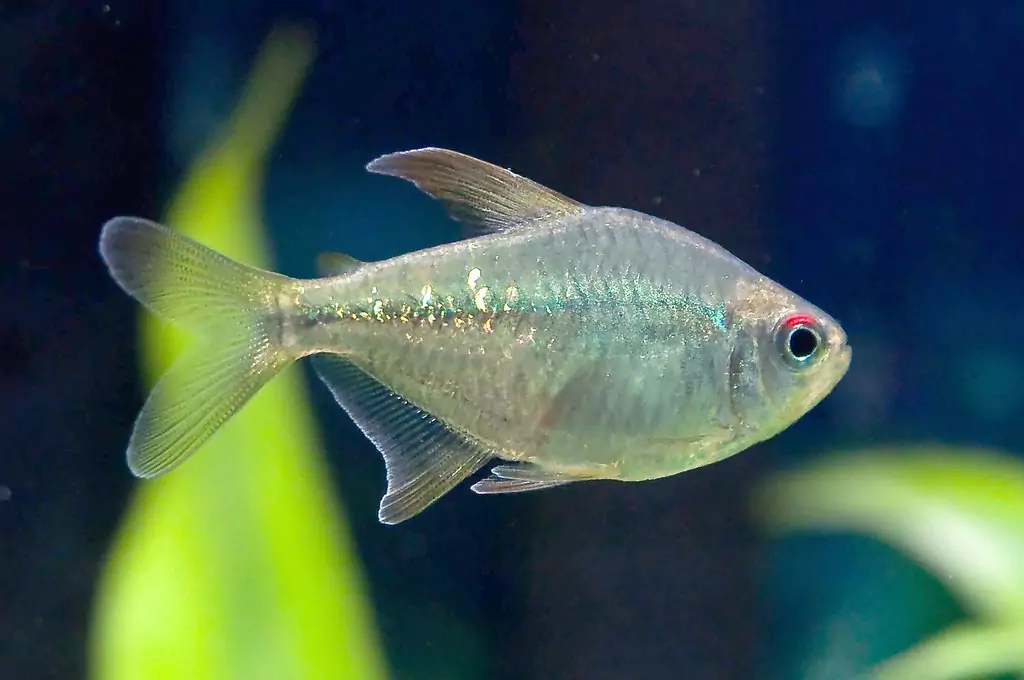
Phantom Tetra (Hyphessobrycon megalopterus)
Featuring a distinctive black “phantom” mark on its body, this tetra species adds a mysterious allure to aquariums. Its schooling behavior and compatibility with other peaceful species make it a popular choice for community setups.
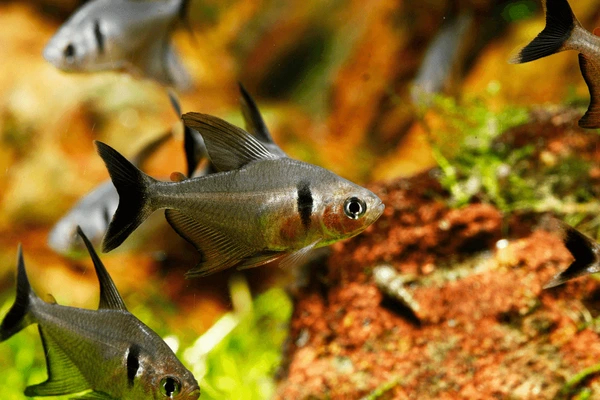
Congo Tetra (Phenacogrammus interruptus)
Renowned for its iridescent colors and flowing fins, the Congo Tetra is a stunning addition to larger aquariums. Its peaceful nature and preference for well-planted tanks make it a favorite among experienced aquarists.
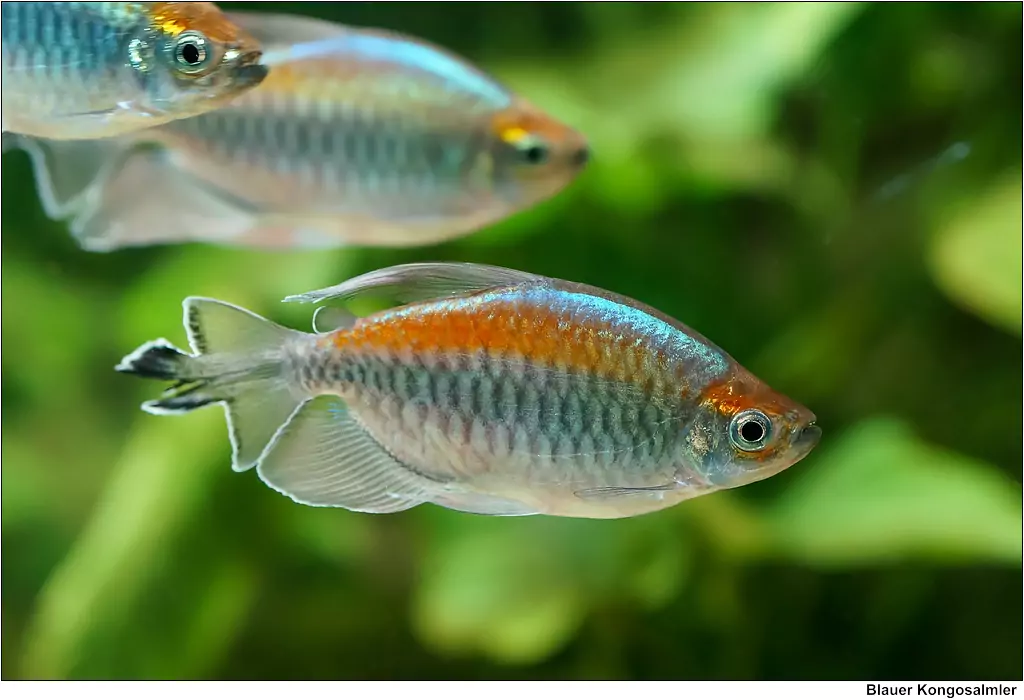
Red-Eyed Tetra (Moenkhausia sanctaefilomenae)
Sporting a vivid red iris, the Red-Eyed Tetra is prized for its eye-catching appearance. Its schooling behavior and adaptability to various water conditions make it an attractive choice for community aquariums.
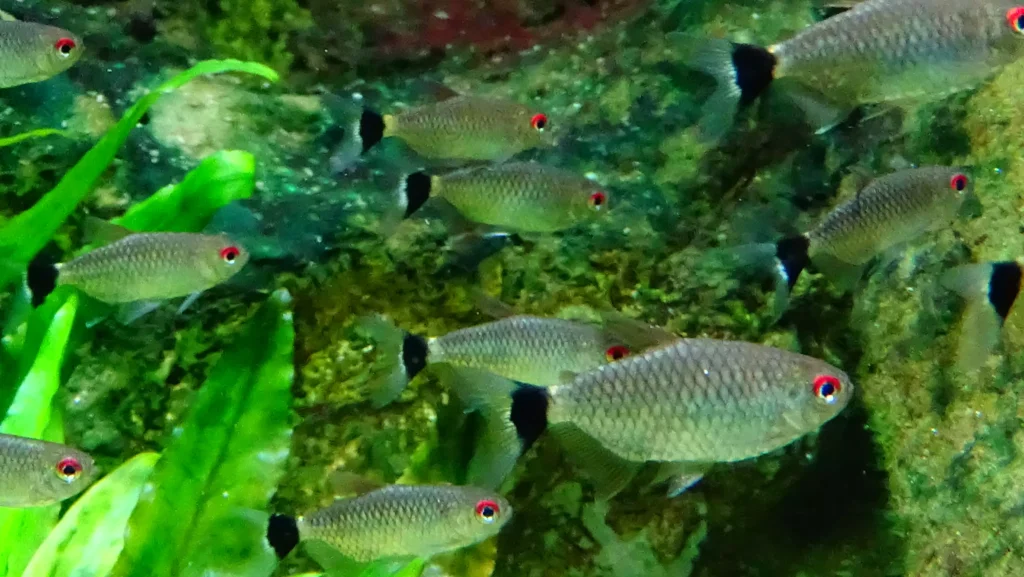
Rosy Tetra (Hyphessobrycon rosaceus)
Boasting a rosy-pink coloration, the Rosy Tetra adds a touch of warmth to aquariums. Its peaceful temperament and ability to thrive in community settings make it a popular choice for both novice and experienced fishkeepers.

Exploring these diverse Large Tetra species allows aquarists to select the perfect combination for their aquarium, creating visually stunning and harmonious aquatic environments.
Setting Up a Tank for Large Tetra
Tank Size Requirements
Large Tetras, owing to their active nature and significant size, thrive best in spacious aquariums. A tank with a minimum size of 20 gallons is recommended to provide ample swimming space. Larger tanks, such as 40 gallons or more, are preferable for accommodating their schooling behavior and promoting a healthier environment.
Water Conditions (Temperature, pH, Hardness)
- Temperature: Maintain a stable water temperature between 72°F to 78°F (22°C to 26°C) to mimic the natural habitat of Large Tetras. Consistent warmth promotes their overall well-being and enhances their vibrant colors.
- pH Levels: Aim for a slightly acidic to neutral pH range of 6.5 to 7.This range mimics the conditions of their native habitats and supports optimal health.
- Hardness: Keep water hardness in the soft to moderately hard range, with a general preference for a range of 5 to 15 dGH.
Suitable Tank Mates and Compatibility Issues
- Peaceful Community Fish: Large Tetras are generally peaceful and thrive when kept with compatible tank mates. Consider other community fish such as Gouramis, Corydoras catfish, and peaceful bottom-dwelling species.
- Avoid Aggressive Species: Steer clear of aggressive or territorial fish that may stress or harass the Large Tetras. This includes fin-nipping species or those that may outcompete them during feeding.
- Schooling Dynamics: Large Tetras exhibit a natural schooling behavior, so keeping them in groups of at least six individuals helps reduce stress and enhances their social interactions. Ensure the tank is spacious enough to accommodate their schooling movements.
By adhering to these guidelines, aquarists can create an optimal environment for Large Tetras, fostering their health, vibrancy, and sociable nature in a carefully curated aquarium setting.
Feeding and Nutrition
Dietary Preferences of Large Tetras
Large Tetras are omnivores with a diverse palate. Their diet should include a balanced mix of high-quality flake or pellet food, supplemented with live or frozen treats. Incorporate a variety to meet their nutritional needs and enhance their overall health.
Recommended Types of Food
- Flake or Pellet Food: Provide a staple diet of high-quality flake or pellet food specially formulated for tropical fish. Look for options that contain a mix of proteins, fats, and essential vitamins to support the dietary requirements of Large Tetras.

- Live or Frozen Foods: Enhance their diet with occasional treats such as live or frozen brine shrimp, bloodworms, and daphnia. These protein-rich offerings mimic their natural diet and contribute to their vibrant colors.
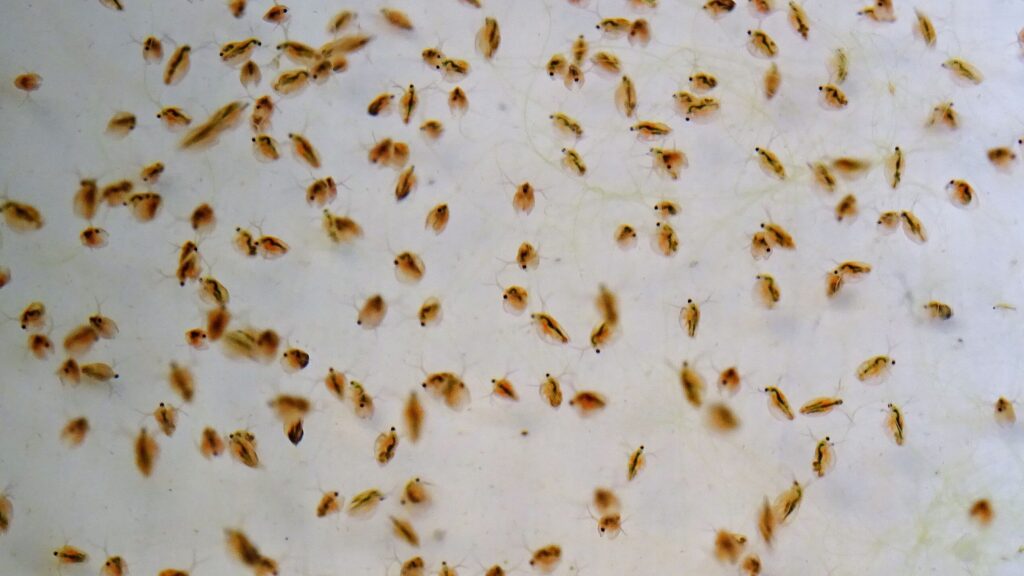
Feeding Schedule
- Regular Feedings: Feed Large Tetras small portions two to three times a day. Consistency in feeding helps maintain their energy levels and supports their active lifestyle.
- Monitor Consumption: Be mindful of the amount they consume within a few minutes. Overfeeding can lead to water quality issues. Adjust the quantity based on their appetite and the presence of uneaten food.
Supplementary Vegetables
Large Tetras can benefit from occasional plant-based offerings. Include blanched vegetables like spinach, zucchini, or cucumber to provide fiber and essential nutrients.
Consider Floating and Sinking Foods
Incorporate a mix of floating and sinking foods to cater to their natural feeding behaviors. This ensures all levels of the aquarium are utilized, accommodating the diverse ways Large Tetras search for food.
By adhering to these feeding recommendations, aquarists can contribute to the health and vibrancy of Large Tetras, promoting their natural behaviors and enhancing the overall enjoyment of fishkeeping.
Health and Maintenance
Common Health Issues and Prevention
- Ich (White Spot Disease): Large Tetras are susceptible to ich, a common parasitic infection. To prevent it, maintain stable water parameters, avoid sudden changes, and quarantine new fish before introducing them to the main tank.
- Fin Rot: Ensure a clean and well-maintained aquarium to prevent bacterial infections leading to fin rot. Regular water changes and a proper filtration system contribute to a healthy aquatic environment.
Maintaining a Healthy Environment
- Regular Water Changes: Perform routine water changes to eliminate accumulated toxins, debris, and uneaten food. This helps maintain optimal water quality, reducing the risk of diseases and promoting the overall well-being of Large Tetras.
- Proper Filtration: Invest in a reliable filtration system suitable for the size of the aquarium. A well-functioning filter removes impurities and supports a stable nitrogen cycle, essential for a healthy aquatic ecosystem.
- Monitor Water Parameters: Regularly test and monitor water parameters, including temperature, pH, ammonia, nitrite, and nitrate levels. Consistent and appropriate values contribute to a stress-free environment for the fish.
Observation and Quarantine
- Regular Monitoring: Observe the behavior, eating habits, and appearance of Large Tetras regularly. Early detection of any abnormalities allows for prompt intervention and reduces the risk of diseases spreading within the tank.
- Quarantine New Additions: Quarantine new fish before introducing them to the main aquarium. This precautionary step helps prevent the introduction of potential diseases and parasites to the existing fish population.
Provide Hiding Spaces
Create hiding spaces and shelters within the aquarium using plants, decorations, or caves. These spaces offer security to Large Tetras, reducing stress and minimizing the likelihood of aggression among tankmates.
By implementing these health and maintenance practices, aquarists can proactively safeguard the well-being of Large Tetras, creating an environment conducive to their natural behaviors and longevity in captivity.
Breeding Large Tetra
Overview of the Breeding Process
- Selecting Breeding Pairs: Choose healthy and mature pairs of Large Tetras for breeding. Look for individuals displaying vibrant colors, optimal body condition, and compatibility.
- Separate Breeding Tank: Set up a dedicated breeding tank with appropriate water conditions and a gentle filtration system. This tank provides a controlled environment for the breeding process.
Creating a Conducive Breeding Environment
- Adjust Water Parameters: Mimic the natural breeding conditions by slightly increasing the water temperature to around 78-82°F (26-28°C). Maintain soft to moderately hard water with a pH level around 6.5-7.0.
- Use Spawning Substrate: Provide a spawning substrate such as fine-leaved plants or a mesh grid where the female can deposit her eggs. This substrate protects the eggs from potential predation.
Stimulating Breeding Behavior
- Implement a Day-Night Cycle: Simulate a natural day-night cycle in the breeding tank to induce breeding behavior. Dim the lights in the evening to encourage spawning during the early morning hours.
- Nutritious Diet: Ensure the breeding pair receives a varied and nutritious diet, including live or frozen foods. This enhances their reproductive health and encourages successful spawning.
Monitoring and Separation
- Monitor Spawning Behavior: Watch for courtship behavior, where the male actively courts the female, leading to the release of eggs and subsequent fertilization. Large Tetras typically scatter their eggs, and the process may take place over several days.
- Separate Parents: Once spawning is complete, remove the adult fish from the breeding tank to prevent them from consuming the eggs. This separation also helps avoid potential aggression towards the fry.
Caring for Fry
- Provide Fry-Safe Environment: Transfer the fertilized eggs to a separate tank with gentle water flow to protect them from being eaten by other tank inhabitants.
- Feed Properly: Offer appropriate fry food, such as powdered or liquid fry food, infusoria, or newly hatched brine shrimp. Gradually transition to larger food as the fry grows.
By following these breeding guidelines, aquarists can enhance the likelihood of successful Large Tetra reproduction and experience the joy of observing the fascinating journey from courtship to fry development.
Tips for Enhancing the Aquarium Experience
Aquascaping Ideas
- Natural Biotope: Create a natural habitat by incorporating elements like driftwood, rocks, and natural substrates. Large Tetras, with their vibrant colors, stand out beautifully against a backdrop that mimics their native environment.
- Plant Arrangements: Integrate live plants strategically throughout the aquarium. Consider species like Amazon Sword, Java Fern, or Vallisneria to provide shelter and enhance the overall aesthetic. Arrange plants in clusters to create visually appealing focal points.
Suitable Decorations and Plants
- Caves and Hiding Spaces: Large Tetras appreciate hiding spots. Use decorations like caves or rock formations to create secure retreats. This not only reduces stress but also encourages natural behaviors.
- Soft Substrates: Opt for soft substrates like sand or fine gravel, which mimic the natural riverbeds of Large Tetras. These substrates also promote a healthy environment for bottom-dwelling species.
Lighting Considerations
- Natural Daylight Simulation: Choose aquarium lights that simulate natural daylight conditions. This enhances the visibility of the vibrant colors of Large Tetras and supports the growth of live plants.
- Adjustable Lighting: Consider lights with adjustable intensity or timers to mimic a natural day-night cycle. This helps regulate the fish’s behavior and contributes to a balanced ecosystem.
Creating Visual Depth
- Use of Backgrounds: Implement a background with natural scenes or gradients to create an illusion of depth in the aquarium. This enhances the overall visual appeal and draws attention to the dynamic behavior of Large Tetras.
Interactive Features
- Floating Plants: Introduce floating plants like Water Sprite or Duckweed. These not only provide shade but also add an interactive element as Large Tetras may explore and weave through the floating foliage.
- Bubble Walls or Air Stones: Incorporate gentle bubble walls or air stones to create subtle water movement. This not only oxygenates the water but also adds an engaging visual aspect to the aquarium.
Enhancing the aquarium experience for Large Tetras involves thoughtful design and consideration of their natural behaviors. By incorporating these tips, aquarists can create a captivating and enriching environment for both the fish and the observers.
Conclusion
In conclusion, our exploration into the captivating world of Large Tetras has unveiled key insights for both seasoned aquarists and aspiring enthusiasts alike. From understanding the vibrant colors, distinctive patterns, and engaging behaviors that define these magnificent fish to delving into the intricacies of their care, breeding, and the art of aquascaping, we have embarked on a comprehensive journey.
To recap, we’ve covered the importance of maintaining suitable tank conditions, offering a balanced diet, and being vigilant about health and breeding considerations. Additionally, we’ve shared tips for creating visually stunning aquariums through thoughtful aquascaping, suitable decorations, and lighting considerations.
As you embark on your own aquatic endeavors with Large Tetras, we invite you to share your experiences, insights, and questions in the comments section below. The dynamic world of aquarium keeping thrives on shared knowledge and community engagement. Whether you’re a seasoned enthusiast eager to impart wisdom or a newcomer seeking advice, let’s foster a collaborative space where the love for these vibrant aquatic companions can flourish.
Thank you for joining us on this journey, and may your aquarium endeavors with Large Tetras be as vibrant and rewarding as the fish themselves. Stay tuned for more aquatic insights and feel free to share your aquatic adventures in the comments below!
Additional Resources
Forums for Further Discussion
Explore in-depth discussions, share experiences, and seek advice on reputable forums dedicated to aquarium enthusiasts. Engage with the community and expand your knowledge.
Recommended Products and Accessories
Elevate your aquarium-keeping experience with quality products and accessories. Here are some recommendations to enhance the well-being of your Large Tetras and the overall aesthetic of your aquatic haven.
- hygger Aquarium LED Lighting
- API Freshwater Master Test Kit
- Fluval 207 Canister Filter
- SERA Vipachips
- Capetsma AquaScape Tools
Investing in reliable equipment and supplements ensures a thriving aquatic environment for your Large Tetras. Feel free to explore these resources and products to elevate your fishkeeping journey. As always, make informed choices based on your specific aquarium setup and the unique needs of your aquatic companions.
Frequently Asked Questions (FAQs)
1. What is the recommended tank size for Large Tetras?
Large Tetras thrive in a minimum tank size of 20 gallons, with larger tanks (40 gallons or more) preferred to accommodate their schooling behavior and provide ample swimming space.
2. Can Large Tetras coexist with other fish species in a community tank?
Yes, Large Tetras are generally peaceful and can coexist with other compatible community fish. Avoid aggressive or fin-nipping species, and ensure the tank provides hiding spots to reduce stress.
3. What is the ideal water temperature for Large Tetras?
Maintain a stable water temperature between 72°F to 78°F (22°C to 26°C) to mimic their natural habitat. Consistent warmth promotes their overall well-being and enhances their vibrant colors.
4. How often should I feed Large Tetras, and what is their recommended diet?
Feed Large Tetras small portions two to three times a day, offering a mix of high-quality flake or pellet food and occasional live or frozen treats like brine shrimp or bloodworms. A varied diet supports their nutritional needs.
5. What are common health issues in Large Tetras, and how can I prevent them?
Common health issues include ich (white spot disease) and fin rot. Prevent these by maintaining stable water parameters, providing a clean environment through regular water changes, and quarantining new fish before introduction.

